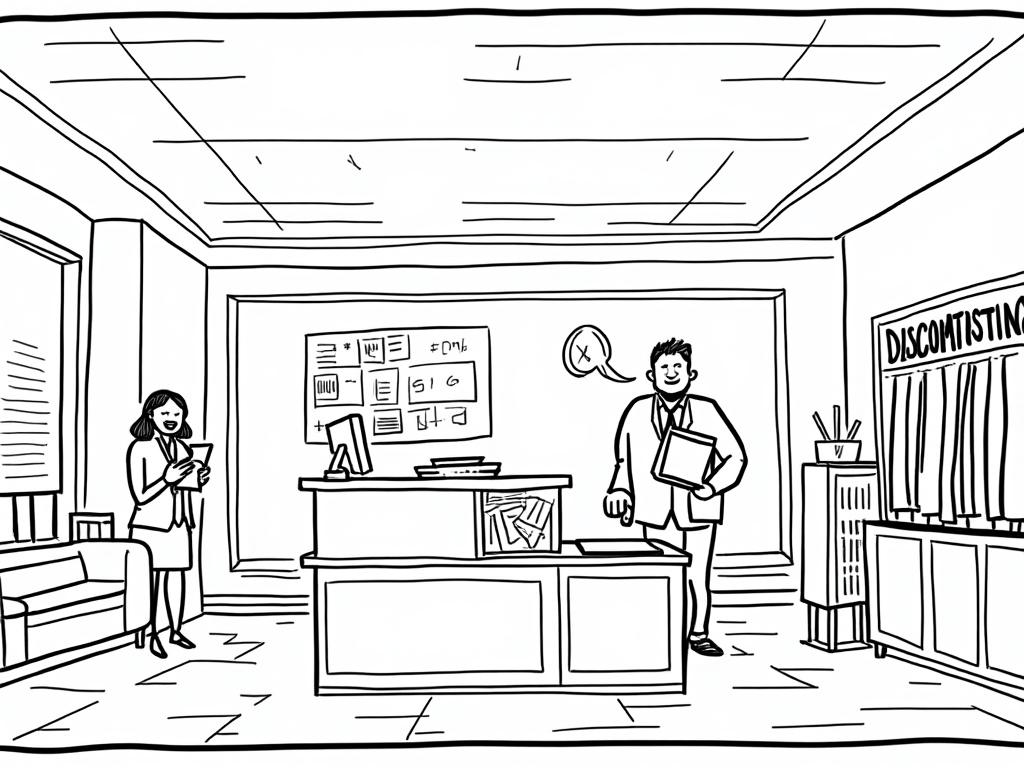
Mastering the Art of Salary Increment: Your Strategic Guide to Career-Changing Negotiations
Reading time: 12 minutes
Ever felt your worth isn’t reflected in your paycheck? You’re not alone. Let’s transform that frustration into a strategic advantage with proven increment tactics that actually work.
Table of Contents
- Understanding the Increment Landscape
- The Preparation Phase: Building Your Case
- Timing Your Request: When Opportunity Meets Preparation
- Advanced Negotiation Tactics
- Beyond Base Salaries: Alternative Compensation Strategies
- Post-Negotiation: Securing Your Success
- Your Strategic Roadmap Forward
- Frequently Asked Questions
Understanding the Increment Landscape
Here’s the straight talk: Salary increments aren’t charity—they’re strategic business decisions. Companies increase compensation when they perceive demonstrable value creation that exceeds the investment cost.
Industry Benchmark Reality Check
Recent data from PayScale reveals fascinating patterns across industries:
Average Annual Salary Increase by Industry (2024)
The Psychology Behind Increment Decisions
According to Harvard Business Review research, managers approve increments based on three critical factors:
- Performance Impact: Quantifiable contributions to team/company objectives
- Market Positioning: How your current compensation compares to industry standards
- Retention Risk: The cost of replacing you versus granting the increase
Quick Scenario: Sarah, a marketing manager, discovered her company’s customer acquisition cost dropped 40% after implementing her campaign strategies. This measurable impact became her strongest increment argument, resulting in a 22% salary increase.
The Preparation Phase: Building Your Case
Well, here’s the reality: Successful increment negotiations start months before the actual conversation. Strategic preparation isn’t just about compiling achievements—it’s about constructing an irrefutable business case.
Documentation Strategy
Create your “Value Portfolio” with these essential components:
| Evidence Type | Examples | Impact Measurement | Documentation Method |
|---|---|---|---|
| Revenue Generation | New client acquisitions, upselling success | Dollar amounts, percentage increases | CRM reports, sales dashboards |
| Cost Savings | Process improvements, vendor negotiations | Annual savings, efficiency gains | Financial reports, before/after comparisons |
| Productivity Enhancements | Automation implementation, team training | Time saved, output increases | Workflow analytics, performance metrics |
| Leadership Impact | Team mentoring, cross-functional collaboration | Team performance improvement, project success rates | 360-degree feedback, project completion records |
| Skill Development | Certifications, additional responsibilities | Expanded capability, reduced external hiring needs | Training certificates, role expansion documentation |
Market Research Intelligence
Professional increment negotiator Lisa Chen emphasizes: “The strongest increment requests combine internal value creation with external market validation. You need both perspectives to build an unshakeable case.”
Conduct thorough market research using:
- Glassdoor and PayScale: Industry-specific salary data
- LinkedIn Salary Insights: Role-specific compensation trends
- Professional Networks: Confidential peer discussions about compensation
- Recruitment Consultants: Real-time market conditions and salary expectations
Timing Your Request: When Opportunity Meets Preparation
Timing transforms good increment requests into great ones. Strategic timing considerations include:
Optimal Timing Windows
Company Performance Cycles:
- After successful quarterly results
- Following major project completions where you played a key role
- During budget planning periods (typically 3-4 months before fiscal year-end)
- Post-acquisition or merger periods when role responsibilities expand
Personal Achievement Peaks:
- Immediately after receiving positive performance reviews
- Following significant professional development milestones
- After successfully managing crisis situations or urgent projects
Case Study: The Perfect Storm Strategy
Marcus, a software architect, identified the perfect increment opportunity when three factors aligned: his team delivered a critical product feature ahead of schedule (personal achievement), the company announced record quarterly profits (company performance), and his manager mentioned upcoming budget approvals (organizational timing). This strategic alignment resulted in a 28% salary increase plus equity options.
Advanced Negotiation Tactics
Ready to transform preparation into results? Master negotiation requires understanding both the art and science of influence.
The ANCHOR Method
Professional negotiations follow this proven framework:
- Assess the situation and stakeholder motivations
- Navigate initial conversations with strategic questions
- Create compelling value propositions
- Handle objections with prepared responses
- Obtain commitment with specific next steps
- Reinforce agreements with follow-up documentation
Handling Common Objections
Budget Constraints:
Response Strategy: “I understand budget considerations. Let’s explore creative solutions that work within current parameters while recognizing my expanded contributions. Could we discuss performance-based increases or alternative compensation structures?”
Performance Expectations:
Response Strategy: “I appreciate that perspective. Here’s documented evidence of how my performance has exceeded established benchmarks [present specific examples]. What additional metrics would help demonstrate continued value creation?”
Beyond Base Salaries: Alternative Compensation Strategies
Sometimes the path to increased compensation doesn’t run through base salary adjustments. Strategic professionals explore the entire compensation ecosystem.
Total Compensation Optimization
Consider these valuable alternatives when base salary increases aren’t immediately feasible:
- Performance Bonuses: Quarterly or annual incentives tied to specific metrics
- Professional Development Funding: Conference attendance, certification programs, advanced degrees
- Flexible Working Arrangements: Remote work options, compressed schedules
- Enhanced Benefits: Additional PTO, health insurance upgrades, retirement matching
- Equity Participation: Stock options, profit-sharing programs
- Leadership Opportunities: Team management roles, project leadership positions
The Total Value Calculation
Smart professionals calculate the monetary equivalent of non-salary benefits. For example:
- Remote work flexibility = $5,000-8,000 annually (transportation, meals, professional wardrobe)
- Professional development budget = $3,000-10,000 (skills enhancement, networking)
- Additional PTO = $200-400 per day (based on daily wage calculations)
Post-Negotiation: Securing Your Success
Successful increment negotiations don’t end with a handshake. Strategic follow-through ensures lasting results and sets the foundation for future advancement.
Documentation and Accountability
Within 24 hours of your negotiation:
- Send a summary email confirming agreed-upon terms
- Establish clear performance metrics for the next review period
- Schedule follow-up meetings to track progress
- Update your personal development plan to align with new expectations
Pro Tip: The right follow-through isn’t just about confirming current agreements—it’s about demonstrating the strategic thinking that justifies continued investment in your career growth.
Your Strategic Roadmap Forward
Mastering salary increments requires ongoing strategic thinking, not one-time tactical execution. Here’s your actionable roadmap for sustained compensation growth:
Immediate Actions (Next 30 Days):
- Audit your current role responsibilities and identify unmeasured value contributions
- Begin documenting quantifiable achievements using the Value Portfolio framework
- Research market compensation data for your role and experience level
- Schedule informal career development conversations with your manager
Strategic Development (Next 90 Days):
- Complete comprehensive market research and identify compensation gaps
- Develop specific skill enhancement plans that align with company objectives
- Build stronger relationships with key stakeholders who influence compensation decisions
- Create measurable goals that demonstrate increasing value to the organization
Long-term Positioning (6-12 Months):
- Execute increment negotiation using prepared documentation and market research
- Establish regular performance review cycles with clear advancement criteria
- Develop mentoring relationships and expand your professional network
- Plan next career advancement moves that compound your compensation growth
Remember: Your compensation reflects your perceived value, not your inherent worth. The most successful professionals continuously invest in building, demonstrating, and communicating their value proposition.
As automation reshapes industries and remote work redefines traditional employment models, professionals who master strategic compensation negotiation will maintain competitive advantages regardless of economic fluctuations.
What specific value have you created in your current role that you haven’t fully communicated to your organization? Your next increment opportunity might be hidden in your unarticulated achievements.
Frequently Asked Questions
How often should I request salary increments?
Generally, annual increment discussions align with performance review cycles, but significant role expansions or major achievements can justify interim requests. Avoid requesting increments more than twice per year unless extraordinary circumstances warrant it. Focus on building sustained value between requests rather than frequent negotiations that may diminish your credibility.
What if my manager says there’s no budget for salary increases?
Budget constraints often reflect immediate cash flow limitations rather than permanent restrictions. Explore alternative timing (next budget cycle), performance-based increases, or non-salary compensation enhancements. Document your request and ask specifically when budget conditions might improve, creating accountability for future consideration.
Should I mention job offers from other companies during increment negotiations?
Use external offers strategically, not as threats. Frame competing offers as market validation of your value rather than ultimatums. Present them professionally: “I’ve received external interest that helps validate my market value. I prefer to continue growing here—what options exist for recognizing my contribution at competitive levels?” This approach maintains relationships while demonstrating your marketability.

Article reviewed by Diego Navarro, Retirement Portfolio Manager | Safe & Steady Growth Strategies, on July 9, 2025



